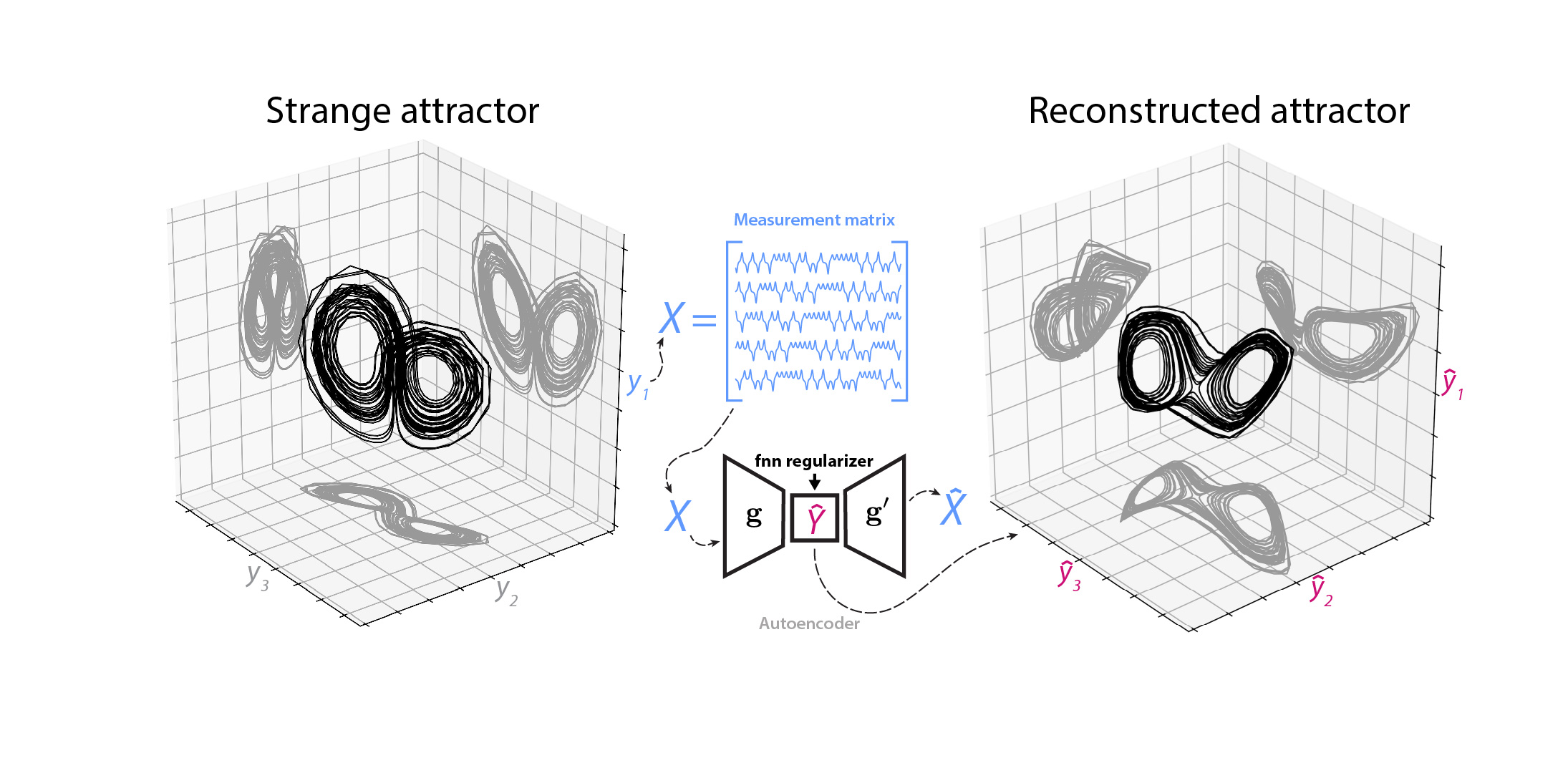Deep reconstruction of strange attractors from time series
Experimental measurements of physical systems often have a limited number of independent channels, causing essential dynamical variables to remain unobserved. However, many popular methods for unsupervised inference of latent dynamics from experimental data implicitly assume that the measurements have higher intrinsic dimensionality than the underlying system---making coordinate identification a dimensionality reduction problem. Here, we study the opposite limit, in which hidden governing coordinates must be inferred from only a low-dimensional time series of measurements. Inspired by classical analysis techniques for partial observations of chaotic attractors, we introduce a general embedding technique for univariate and multivariate time series, consisting of an autoencoder trained with a novel latent-space loss function. We show that our technique reconstructs the strange attractors of synthetic and real-world systems better than existing techniques, and that it creates consistent, predictive representations of even stochastic systems. We conclude by using our technique to discover dynamical attractors in diverse systems such as patient electrocardiograms, household electricity usage, neural spiking, and eruptions of the Old Faithful geyser---demonstrating diverse applications of our technique for exploratory data analysis.
PDF Abstract NeurIPS 2020 PDF NeurIPS 2020 Abstract


